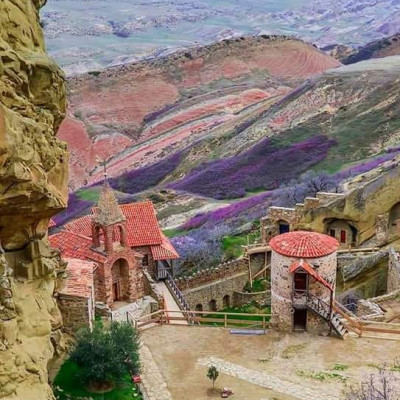
Georgia is home to some of the most remarkable hydromineral resorts in the world, where healing waters and breathtaking landscapes come together to create destinations that are both therapeutic and culturally rich. For centuries, springs across the country have been valued for their restorative qualities, attracting travelers in search of wellness and relaxation. Today, places like Tskaltubo and Borjomi remain symbols of Georgia’s hydromineral heritage, combining ancient traditions with modern tourism. Tskaltubo, located near Kutaisi in western Georgia, is one of the country’s most famous spa resorts. Its thermal radon waters are known for their unique composition, used to treat cardiovascular, musculoskeletal, and nervous system conditions. During the Soviet era, Tskaltubo was a major health destination, with grand sanatoriums welcoming visitors from across the USSR, including leaders such as Joseph Stalin. Many of these architectural landmarks now stand as atmospheric reminders of the past, though several have been restored into modern wellness centers. Today, Tskaltubo offers a mix of history and healing, where visitors can enjoy therapeutic baths while also exploring abandoned spa palaces that reflect a fascinating chapter of Soviet culture. Borjomi, by contrast, is world-renowned for its mineral water, a brand that has reached international markets for over a century. Nestled in a lush gorge, Borjomi’s naturally carbonated volcanic springs are celebrated for their digestive and metabolic benefits. The town blossomed in the 19th century under Russian imperial patronage, becoming a fashionable resort for aristocrats and nobility. Elegant parks, historic bathhouses, and charming wooden mansions still tell the story of its glamorous past. Today, visitors can taste Borjomi water directly at the source in Central Park or enjoy wellness experiences in nearby hotels and spas. In addition, the surrounding Borjomi-Kharagauli National Park, one of Europe’s largest protected areas, invites travelers to combine health tourism with hiking and eco-adventures. Beyond these two famous names, Georgia boasts several other hydromineral resorts. Abastumani in Samtskhe-Javakheti has long been recognized for its clean air and mineral waters, especially effective for respiratory conditions, and is also home to a historic observatory. Sairme in western Georgia offers mineral springs believed to support kidney and liver health, alongside a peaceful natural setting. Likani, close to Borjomi, once served as a royal residence and later a retreat for Soviet leaders, while today it remains a popular wellness destination. Smaller resorts like Nunisi and Menji may be less known but hold local importance and continue Georgia’s tradition of using natural waters for healing. What makes Georgian hydromineral resorts truly special is the way they combine natural health benefits with cultural and historical experiences. A visit is not only about wellness but also about discovering Georgia’s heritage, from grand Soviet sanatoriums in Tskaltubo to the imperial charm of Borjomi and the quiet serenity of mountain springs. For international visitors, these destinations provide an opportunity to enjoy holistic travel—balancing body and mind while exploring landscapes, cuisine, and traditions. Looking ahead, the future of Georgian hydromineral resorts lies in preserving their history while upgrading facilities for modern tourism. With growing global interest in wellness travel, Georgia has the chance to position itself as a leader in authentic health tourism. Whether soaking in Tskaltubo’s thermal waters, sipping Borjomi straight from the spring, or enjoying the tranquility of lesser-known resorts, travelers will discover that Georgia’s hydromineral heritage is not only about healing but also about inspiration and connection to nature.






 Deutsch
Deutsch
 русский
русский
